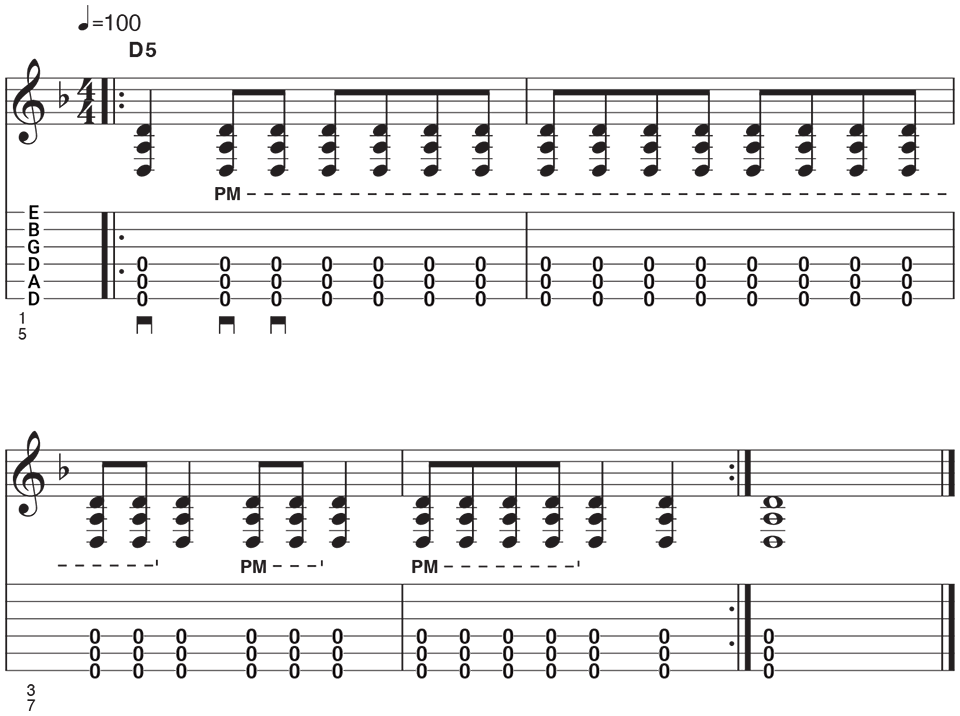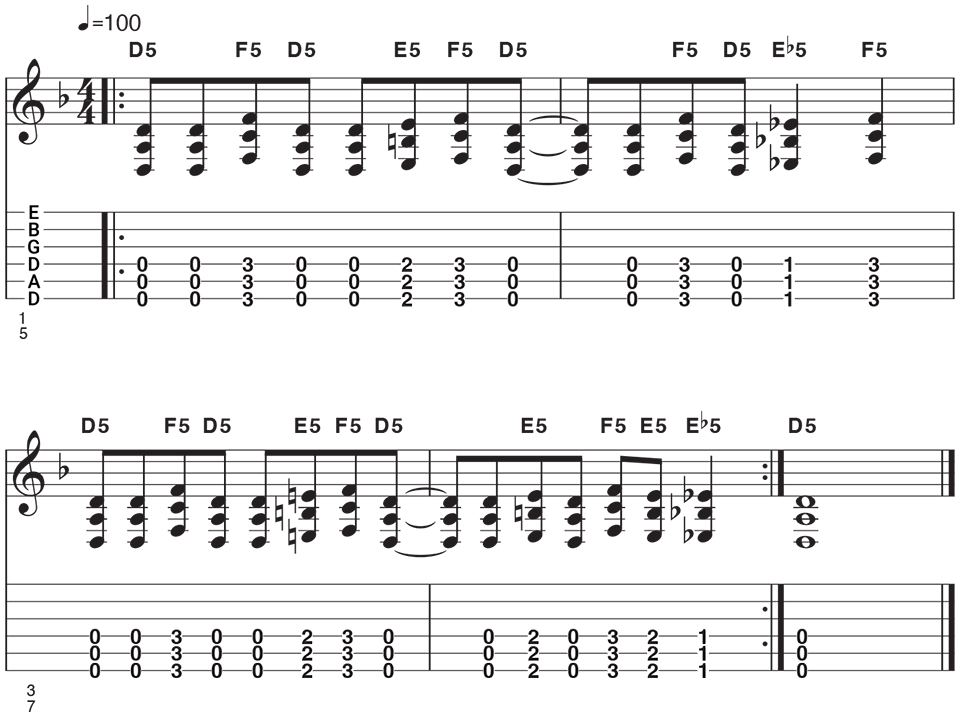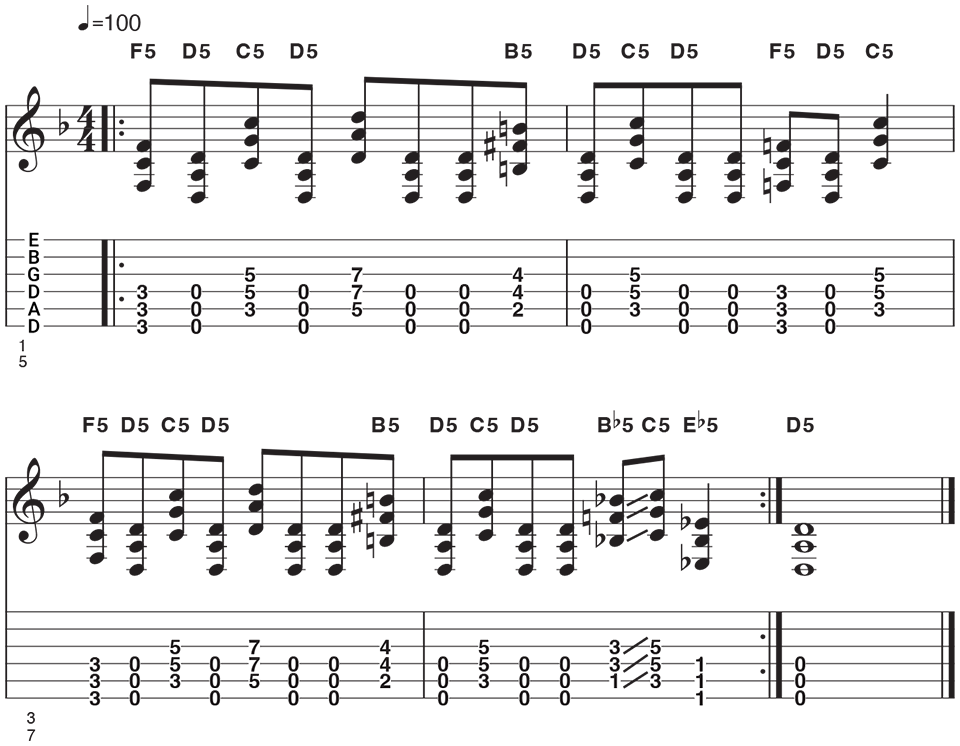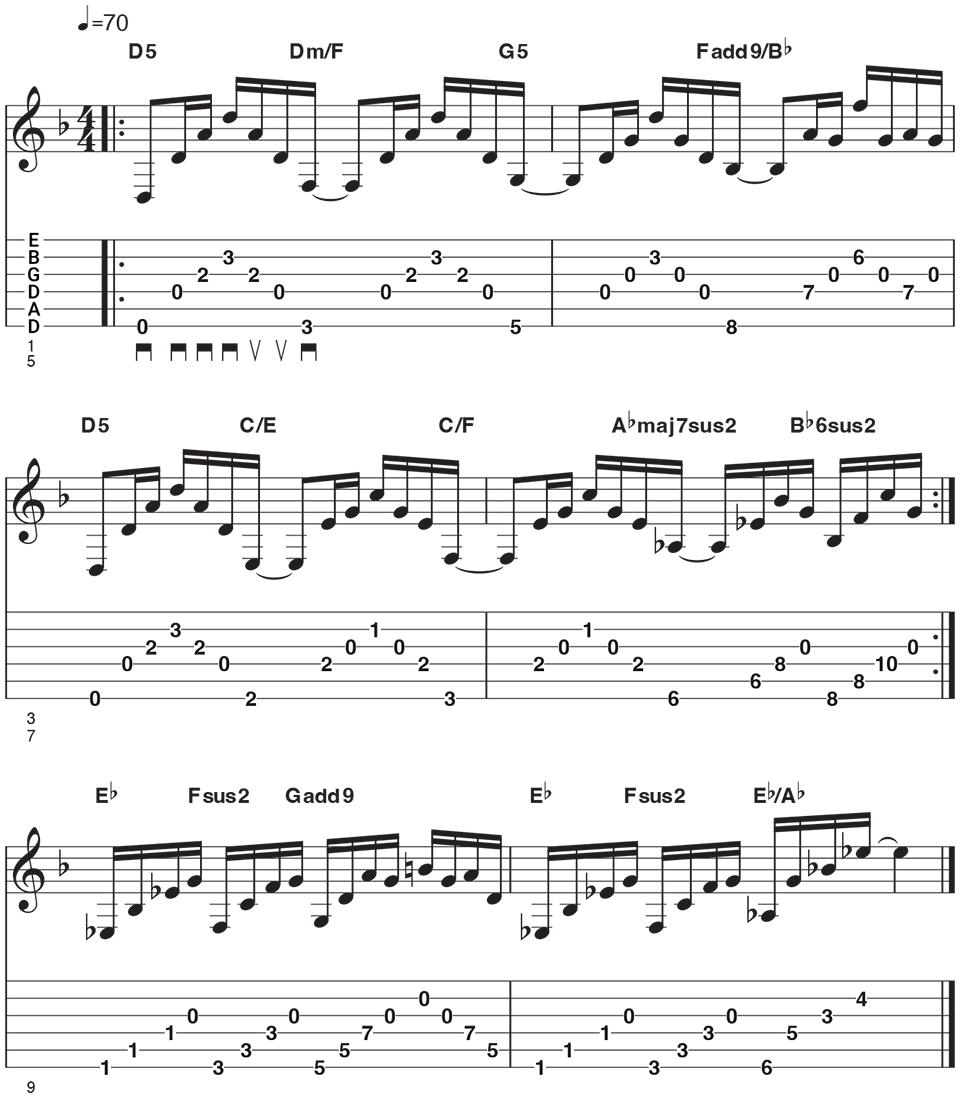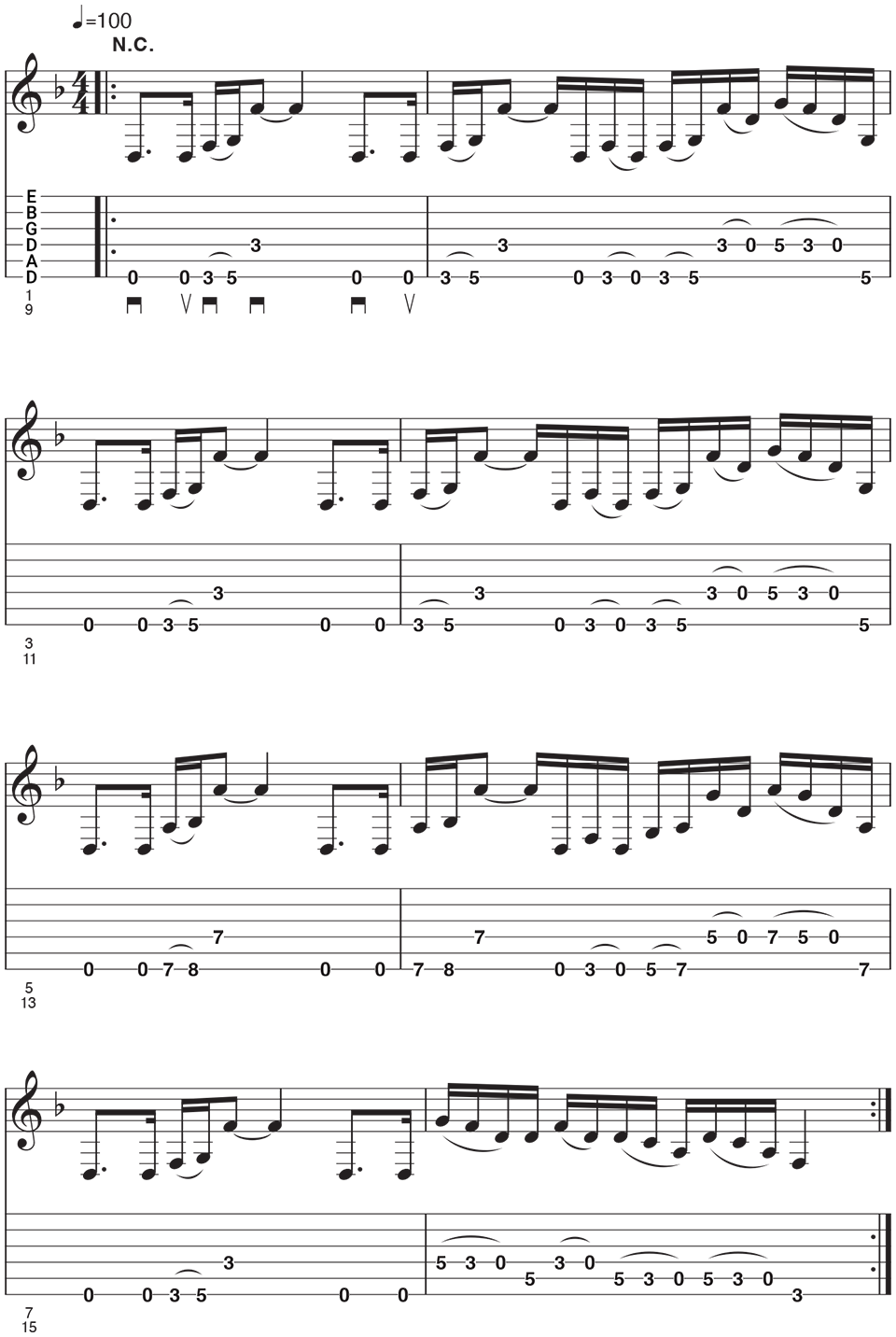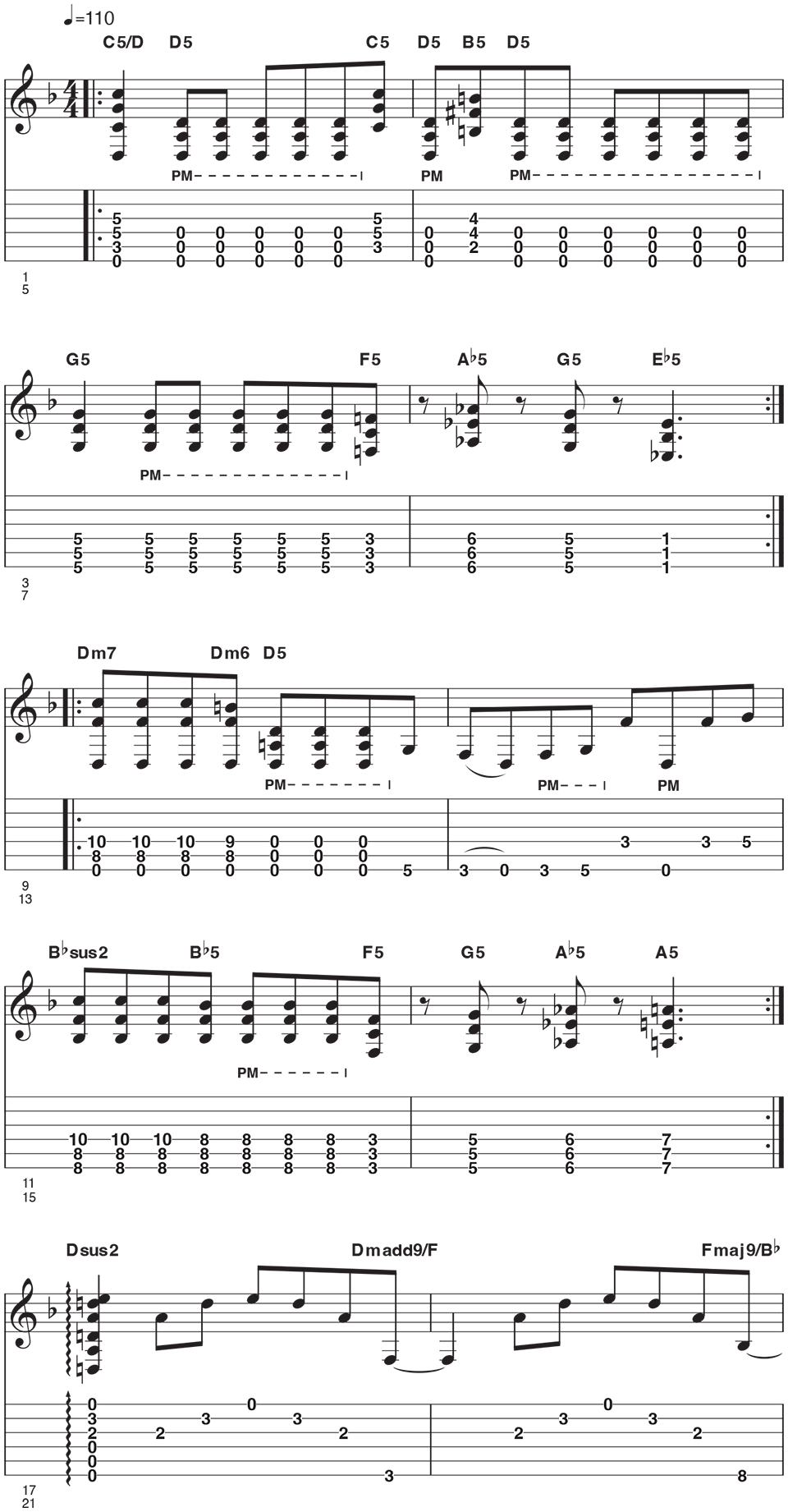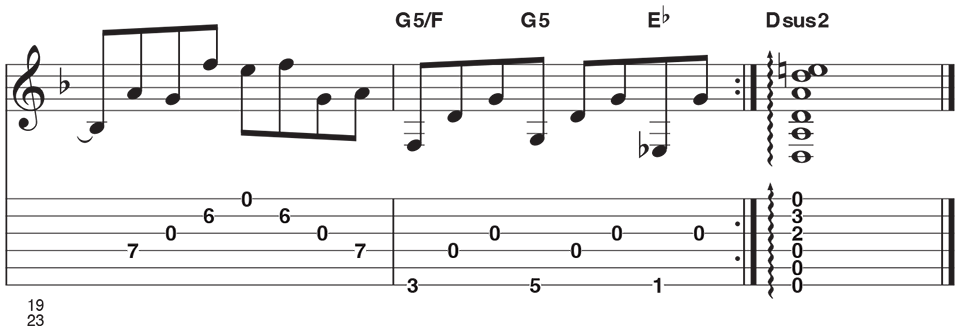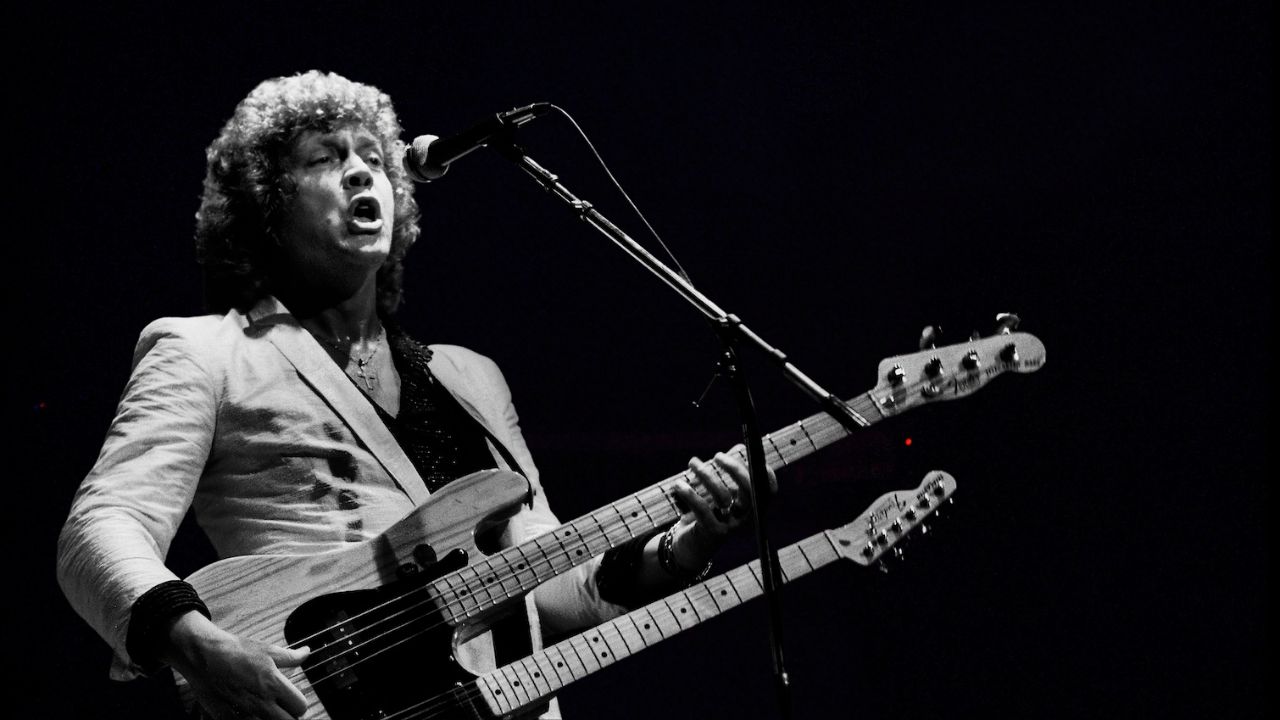“Heavy metal and drop D is a match made in heaven”: Eddie Van Halen used it, Jimmy Page loved it, and all of your heavy metal heroes have tried it – drop D made drop-dead simple
Drop D tuning is one of the easiest alternate tunings to get to grips with. Here’s our step-by-step guide
"Heavy metal and drop D is a match made in heaven," Soundgarden’s Kim Thayil once said, and for heavy rock riffs and thick-sounding chords, drop D is hard to beat.
It's a simple one to set up, too: the sixth string is lowered by a whole step from E to D, while the other five strings remain in standard tuning. Easy!
The term drop D refers to the fact that only the bottom sixth string is “dropped” and results in a D5 power chord when playing the open (ie not fretted) bottom three strings. This unique quality makes it easy to play a movable power chord on these strings, as you simply barre with one finger and move the shape around the neck.
Other benefits to drop D include the sixth and fourth strings both being tuned to D, which opens up the possibilities for symmetrical (and easy) fretting patterns. Also, altering the tuning of the sixth string will breathe new life into your chords, and enable richer chord voicings (especially D and G-based ones).
When it comes to string gauges, it's advisable to have a slightly thicker sixth string, as the drop in pitch can make the string slightly looser (and easier to sound out of tune). A gauge of .046 (from a standard .010 set) or .048 (even .052) would aid keeping a tighter tension on the sixth string after dropping the pitch.
Many guitarists have favored drop D to add thickness to their riffs. The list would include Eddie Van Halen, Jimmy Page, Kurt Cobain, Kim Thayil, Jerry Cantrell, Dimebag Darrell, Tom Morello, Adam Jones, Dave Grohl, Tony Iommi, Brian May, Zakk Wylde, Ty Tabor, Nuno Bettencourt, and David Gilmour. And that's to name just a few!
Example 1. D5 chords using drop D
This example introduces you to the basic of concept of drop D tuning, and how lowering the E down by a whole tone to D will result in a D5 power chord on the bottom three open strings.
All the latest guitar news, interviews, lessons, reviews, deals and more, direct to your inbox!
In this first example, you will get accustomed to the sound of the tuning, by practicing the open D5 power chord with some basic rhythmic variations. Use palm muting to enhance the 'chug' effect!
Example 2. Drop D riffing with power chords
This example shows how you can play a movable power chord shape on the bottom three strings by applying a barre with the first finger. This riff illustrates the effectiveness of the approach by using a series of single finger power chords. It's a powerful sound.
Example 3. More adventurous power chord riffing
Here you will develop flexibility between single finger power chords (root on the sixth string) to three string power chords with their root note on the fifth string. Shifting between these two shapes allows greater scope for creating dynamic riffs with bigger intervallic jumps. Take care when crossing string groups and keep unwanted string noise under control.
Example 4. Arpeggiating with drop D
This illustrates how drop D tuning broadens and inspires your options for extended chord types and different voicings. The chords in this progression are performed as arpeggios so pay attention to your picking and allow the notes to ring and sustain.
When playing this, listen to how drop D has elevated basic shapes, especially when including open strings for lush chord extensions.
Example 5. The sixth and fourth string advantage of drop D
Here you can see the fretboard symmetry between the sixth string and the fourth string as both are tuned to D, but an octave apart. This enables the same fingering and fret positions to easily achieve wider intervalic jumps.
Take care with the timing of this riff as well as note clarity for the fast open string pull-offs.
Example 6. Power chord and arpeggio fun!
This combines many of the techniques covered earlier. Bars 1-4 feature the first riff using power chords with root notes on the sixth and fifth strings. Specifically, you are mixing the one finger power chord shapes with traditional power chord fretting. Pay attention to the palm muting directions to keep the riff tight.
Bars 5-8 introduce a new riff the includes melodic variations to the fifth string root power chords when utilizing the dropped sixth string. Also included in this riff is a symmetrical single-note riff on the sixth and fourth strings. This section is covering a large portion of the neck, so take care when shifting positions.
Bars 9-12 conclude with rich chord voicings performed as arpeggios. Make sure you allow the notes of each chord to sustain.
Drop D in action
Van Halen - Unchained
This is one of the greatest drop D riffs of all time, with a tone to match. Eddie’s iconic drop D riff fuses the thick flanger tinged driving low D with the harmonic movement of triads, weaving between a D major and D minor tonality.
Soundgarden - Outshined
Kim Thayil helped defined the sound of grunge with this drop D Black Sabbath-inspired riff. The riff includes palm muted power chords performed on the bottom three strings, producing a thick and heavy sound. The riff has a dissonant quality with the inclusion of the Ab5 power chord, implying a diminished fifth interval for additional tension and release.
Kings X - Pleiades
Kings X guitarist Ty Tabor is very creative when it comes to using drop D. Pleiades helps to illustrate the contrasting possibilities of drop D, from thick and heavy power chords, to rich and expressive open voiced arpeggios. Ty adds movement to a static chord by moving the bass note, altering the harmony and function of the chord.
Jamie Humphries is an English guitarist based in Sweden. He has toured and performed with artists such as Brian May, Queen, Jeff Beck and Henry Rollins, as well as performing across Europe for We Will Rock You and in America with the Australian Pink Floyd Show. He was a longtime contributor to Guitar Techniques magazine and contributes lessons for Gibson. He runs his own studio in Stockholm where he produces Youtube content for Six String Alliance and Produce Like A Pro. He is a Music Man and Mesa/Boogie endorsee.
- Jason SidwellTuition Editor – GuitarWorld.com, GuitarPlayer and MusicRadar.com
You must confirm your public display name before commenting
Please logout and then login again, you will then be prompted to enter your display name.
